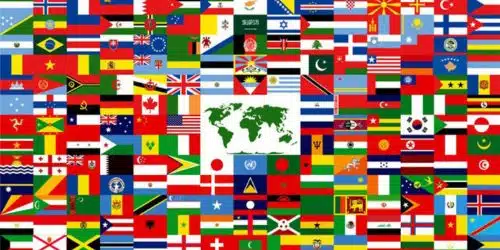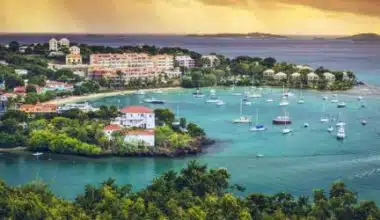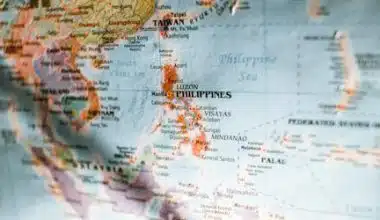Territories that are not yet full countries may have various political statuses, and their paths to independence or full recognition can differ. Some territories are classified as dependencies, colonies, autonomous regions, or special administrative regions. They may have varying levels of self-governance and may be subject to the authority of a larger sovereign state or governing power. Some territories are seeking independence through political processes or referendums, while others are disputed or have unresolved status issues. Examples of such territories include certain regions in Africa, the Middle East, the Caribbean, and the Pacific, among others. This post gives a clear understanding and details about different countries in the world and status.
How Many Countries Are There In The World
There are approximately 195 countries in the world, recognized by the United Nations. These countries are often grouped into different categories based on various criteria. Including geography, economy, politics, and regional affiliations.
Here are the ways countries are grouped:
#1. Geographical Groups
Countries are often grouped based on their geographical location, such as continents. For example, there are countries in Africa, Asia, Europe, North America, South America, Australia, and Oceania.
#2. Economic Groups
Countries can be categorized based on their level of economic development, such as developed, developing, and least developed countries.
#3. Political Groups
Countries can be classified based on their political systems, such as democratic countries, authoritarian regimes, or constitutional monarchies.
#4. Regional Organizations
Some countries are members of regional organizations, such as the European Union (EU), African Union (AU), or Association of Southeast Asian Nations (ASEAN).
#5. United Nations Groups
The United Nations classifies countries into different groups, such as the five permanent members of the UN Security Council (USA, Russia, China, France, and the UK) and non-permanent members.
#6. G20
The G20 group consists of major advanced and emerging economies.
#7. NATO
Countries that are part of the North Atlantic Treaty Organization (NATO) form a military alliance.
#8. OPEC
The Organization of the Petroleum Exporting Countries (OPEC) comprises oil-producing nations.
Steps In Forming A Country
Countries are formed through a combination of historical, political, and social processes. The creation of a country involves the following steps:
#1. Territorial Identity
A group of people inhabiting a specific geographic area may develop a shared sense of identity, culture, and history, creating a basis for the formation of a distinct territory.
#2. Political Unification
The process of forming a country often starts with political unification. This can happen through conquest, colonization, or voluntary agreements between different regions or groups to form a single political entity.
#3. Independence
In some cases, regions or territories that were previously part of a larger empire or colonial power may seek independence and self-governance. This may involve negotiations, revolutions, or peaceful transitions to gain sovereignty.
#4. Establishment of Governance
Once the territory has gained independence or political unification, a system of governance is established to manage the affairs of the country. This can take the form of a republic, monarchy, democracy, or other political systems.
#5. International Recognition
To be officially recognized as a country by the international community, the newly formed state often seeks recognition from other countries. Including international organizations, and the United Nations.
#6. Defined Borders
Countries have defined territorial borders that are recognized by neighboring nations and the international community. These borders may be established through treaties, historical agreements, or international law.
#7. Membership in International Organizations
Joining international organizations, such as the United Nations or regional blocs. This is another step towards formalizing a country’s status and participating in the global community.
#8. Development of Institutions
Countries develop various institutions. Such as legal systems, economic structures, education systems, and diplomatic bodies, to function effectively as sovereign states.
Some territories are not recognized as independent countries for various reasons, and their status can be influenced by historical, political, and legal factors.
Factors Affecting Territories Not To Be Listed
Here are some reasons why some territories may not be considered independent countries:
#1. Lack of International Recognition
One of the primary reasons is that some territories may not have received widespread international recognition as sovereign states. Recognition by other countries and international organizations. Such as the United Nations, is crucial for a territory to be acknowledged as a country on the global stage.
#2. Colonial History
Many territories were once part of larger empires or colonies. Their paths to independence have been shaped by historical colonization and decolonization processes. Some territories may still be governed by colonial powers or have unresolved issues related to self-determination and sovereignty.
#3. Territorial Disputes
Some territories may be subject to territorial disputes, where multiple countries claim ownership or sovereignty over the same land. These disputes can prevent the territory from achieving full recognition as an independent country.
#4. Political and Governance Issues
Internal political instability, conflicts, or governance issues can also affect a territory’s ability to be recognized as an independent country. The stability and functionality of a government play a significant role in determining a territory’s status.
Economic development, social progress. Also, the ability to provide essential services to the population can influence a territory’s readiness for independent statehood.
#6. International Relations and Diplomacy
Diplomatic relationships with other countries and the ability to engage in international diplomacy are essential aspects of statehood.
Territories Not Yet Recognized As Independent Countries
Several territories in the world have not been universally recognized as independent countries.
Some of these territories include:
#1. Palestine
The State of Palestine declared its independence in 1988. Its full recognition as a sovereign state has been subject to ongoing political and territorial disputes in the Israeli-Palestinian conflict.
#2. Western Sahara
Western Sahara is a territory in North Africa with a disputed status. It is claimed by both Morocco and the Polisario Front, a Sahrawi liberation movement seeking independence.
#3. Taiwan
Taiwan is officially known as the Republic of China (ROC). It operates as a separate political entity but has limited international recognition as a sovereign state due to China’s claim over the island.
#4. Kosovo
Kosovo declared independence from Serbia in 2008, but its status is subject to international dispute. Some countries recognize it as an independent state and others do not.
#5. Northern Cyprus
Northern Cyprus is a self-declared state recognized only by Turkey. It declared independence in 1983 after a Turkish military intervention, but it is not recognized by the international community as a sovereign state.
#6. Somaliland
Somaliland declared independence from Somalia in 1991, but it has not been widely recognized as an independent state.
#7. Abkhazia and South Ossetia
Abkhazia and South Ossetia are territories within Georgia that declared independence. They are recognized as independent states by only a few countries, including Russia.
#8. Gibraltar
Gibraltar is a British Overseas Territory located on the southern coast of Spain, and its status remains subject to dispute between the United Kingdom and Spain.
#9. Puerto Rico
Puerto Rico is an unincorporated territory of the United States, with a special political status known as a Commonwealth.
#10. Falkland Islands
The Falkland Islands are a British Overseas Territory, but their sovereignty is claimed by Argentina, leading to a long-standing territorial dispute.
#11. Greenland
Greenland is an autonomous territory within the Kingdom of Denmark. It has sought greater self-governance and has considered independence.
#12. New Caledonia
New Caledonia is a special collectivity of France, and its political status is subject to ongoing discussions about potential independence.
#13. Bougainvillea
Bougainville is an autonomous region within Papua New Guinea. It voted for independence in a 2019 referendum. However, the process of gaining full independence is still underway.
#14. Nagorno-Karabakh
Nagorno-Karabakh is a region within Azerbaijan, but its governance is disputed, with the area being controlled by ethnic Armenians.
Characteristics Of A Territory Being Recognized As An Independent Body
To be fully recognized as a country by the international community, a territory generally needs to have the following governing bodies and characteristics:
#1. Effective Government
The territory must have a functioning and effective government capable of managing the affairs of the nation. This government should have the authority to enact and enforce laws and provide essential services to the population. They must represent the country’s interests domestically and internationally.
#2. Defined Territory
A recognized country should have clearly defined territorial boundaries that are internationally accepted and respected by other nations. The territory’s borders should be stable and agreed upon by neighboring countries.
#3. Permanent Population
A country must have a permanent population of people residing within its territory. This population should have some level of stability and continuity.
#4. Capacity for International Relations
The governing body of the territory should be capable of engaging in diplomatic relations with other countries. This includes the ability to negotiate treaties, participate in international organizations, and conduct foreign affairs.
#5. Independence and Sovereignty
A recognized country must be independent and sovereign. It exercises full control over its internal and external affairs without undue influence from other countries.
#6. Recognition by Other States
For a territory to be fully recognized as a country, it usually requires recognition by other sovereign states, including major global players. Recognition is a significant aspect of establishing statehood and formalizes a country’s place in the international community.
List Of Existing Countries In Alphabetic Order
A
Afghanistan
Albania
Algeria
Andorra
Angola
Antigua and Barbuda
Argentina
Armenia
Australia
Austria
Azerbaijan
B
The Bahamas
Bahrain
Bangladesh
Barbados
Belarus
Belgium
Belize
Benin
Bhutan
Bolivia
Bosnia and Herzegovina
Botswana
Brazil
Brunei
Bulgaria
Burkina Faso
Burundi
C
Cape Verde
Cambodia
Cameroon
Canada
Central African Republic
Chad
Chile
China
Colombia
Comoros
Congo, Democratic Republic of the
Congo, Republic of the
Costa Rica
Côte d’Ivoire
Croatia
Cuba
Cyprus
Czech Republic
D
Denmark
Djibouti
Dominica
Dominican Republic
E
East Timor (Timor-Leste)
Ecuador
Egypt
El Salvador
Equatorial Guinea
Eritrea
Estonia
Eswatini
Ethiopia
F
Fiji
Finland
France
G
Gabon
The Gambia
Georgia
Germany
Ghana
Greece
Grenada
Guatemala
Guinea
Guinea-Bissau
Guyana
H
Haiti
Honduras
Hungary
I
Iceland
India
Indonesia
Iran
Iraq
Ireland
Israel
Italy
J
Jamaica
Japan
Jordan
K
Kazakhstan
Kenya
Kiribati
Korea, North
Korea, South
Kosovo
Kuwait
Kyrgyzstan
L
Laos
Latvia
Lebanon
Lesotho
Liberia
Libya
Liechtenstein
Lithuania
Luxembourg
M
Madagascar
Malawi
Malaysia
Maldives
Mali
Malta
Marshall Islands
Mauritania
Mauritius
Mexico
Micronesia, Federated States of
Moldova
Monaco
Mongolia
Montenegro
Morocco
Mozambique
Myanmar (Burma)
N
Namibia
Nauru
Nepal
Netherlands
New Zealand
Nicaragua
Niger
Nigeria
North Macedonia
Norway
O
Oman
P
Pakistan
Palau
Panama
Papua New Guinea
Paraguay
Peru
Philippines
Poland
Portugal
Q
Qatar
R
Romania
Russia
Rwanda
S
Seychelles
Sierra Leone
Singapore
Slovakia
Saint Kitts and Nevis
Slovenia
Saint Lucia
Saint Vincent and the Grenadines
Samoa
San Marino
Sao Tome and Principe
Saudi Arabia
Senegal
Serbia
Solomon Islands
Somalia
South Africa
Spain
Sri Lanka
Sudan
Sudan, South
Suriname
Sweden
Switzerland
Syria
T
Togo
Tonga
Taiwan
Tajikistan
Tanzania
Thailand
Trinidad and Tobago
Tunisia
Turkey
Tuvalu
Turkmenistan
U
Uganda
Ukraine
United Arab Emirates
United Kingdom
Uruguay
United States
Uzbekistan
V
Vanuatu
Vatican City
Venezuela
Vietnam
Y
Yemen
Z
Zambia
Zimbabwe
How Many Countries Are There In The World In 2023?
The total number of countries in the world in 2023 is 195. This includes 193 member states of the United Nations and 2 observer states.
How Old Is The Oldest Country?
The oldest country in the world is Iran, which was founded in 3200 B.C. However, the concept of a country, as we understand it today, did not exist in its current form in ancient times. The modern nation-state system with clearly defined borders and centralized governance emerged much later in history.
Which Is The Oldest Country In Africa?
The question of which is the oldest country in Africa is complex and can be interpreted in different ways. Many modern African countries can trace their roots to ancient kingdoms and empires that existed long ago. The oldest country in Africa is Egypt. Ancient Egypt, with its remarkable civilization along the Nile River, is one of the oldest and most well-documented in history. The ancient Egyptian civilization dates back to around 3100 BCE, making it one of the earliest known organized societies. However, it’s important to note that the concept of a modern nation-state as we know it today was not present in ancient times.
Therefore, while Egypt’s ancient civilization is one of the oldest in Africa, it’s not straightforward to pinpoint a single oldest country in the modern sense.
Which Country Is The Youngest?
The youngest country in the world is South Sudan. It declared its independence from Sudan on July 9, 2011, making it the newest country in the world.
What Was The First Country On Earth?
The concept of a country as a modern nation-state did not exist in ancient times, so it is challenging to identify the first country on Earth. However, historians and archaeologists recognize some of the earliest civilizations and city-states that emerged in antiquity.
One of the earliest known civilizations in human history is the Sumerian civilization, which arose in Mesopotamia (modern-day Iraq) around 4500 BCE. Sumer was a collection of city-states. Such as Ur, Uruk, and Eridu, which had their rulers, governments, and cultures. While not considered a modern country, Sumer is among the earliest examples of organized societies with urban centers and advanced writing systems.
Similarly, ancient Egypt is also one of the oldest known civilizations, dating back to around 3100 BCE. The Nile River valley was home to a sophisticated society with a centralized government, pharaohs, and a well-developed culture.
Conclusion
There are 195 countries in the world according to the United Nations membership, comprising 193 member states and 2 observer states (the Holy See and Palestine). Countries are grouped in various ways based on different criteria and contexts. Some common groupings include geographical groups (based on continents), economic groups (developed, developing, least developed), political groups (democratic, authoritarian, constitutional monarchies), and regional organizations (EU, AU, ASEAN).
UN classifications (permanent and non-permanent Security Council members), G20, NATO, and OPEC. These groupings help categorize countries according to their geographic location. Economic development, political systems, regional affiliations, and international alliances. It’s essential to recognize that country groupings can change over time due to geopolitical shifts and evolving global dynamics.
Related Articles
- DO YOU NEED A PASSPORT FOR PUERTO RICO?
- THE MOST DANGEROUS PLACES IN THE WORLD IN 2023
- BEST TRAVEL GROUPS FOR SINGLES IN 2023
- TOP 10 GIRLS’ TRIP DESTINATIONS IN 2023
- BEST VOLUNTEER ABROAD PROGRAMS FOR 2023






